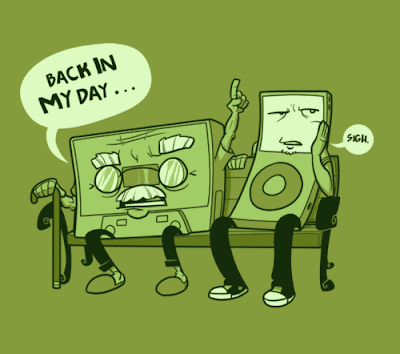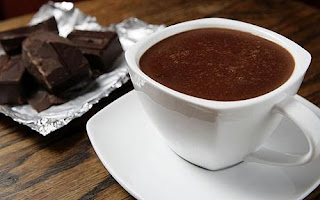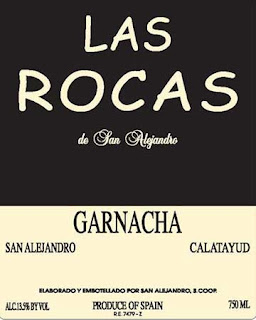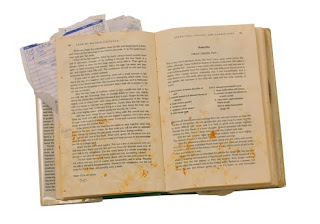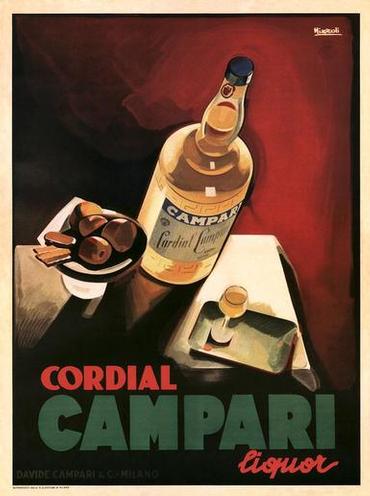As we near the end of the decade, here are my choices for Top 10 Dining Trends This Decade. This entry was made in October.
Last week a friend sent me a link to a recent article in the Chicago Tribune listing the 10 most egregious food trends over the last decade. It didn't really hit me until after I read the piece that we are fast approaching the end of another decade! So with all the crazy end-of-decade special edition magazines, newspaper columns, and radio countdowns, I thought I might contribute a list of my own to the blogosphere.I've always been a list guy. Cooks thrive on them, chef's live and die by them. But, if The Trib was going to diss the culinary community for the 10 things they found most annoying about this decade, I thought it only appropriate to offer my glass-half-full view of things. And so, here is my
Top 10 Most Significant Advances in Dining in This Decade!
Disclaimer: understand that as a rule, I consider "significant" to mean a tipping point for the trends listed below. Most of them didn't start in the last ten years. Yet, they came into the mainstream consciousness this decade, and thereby survived the fad faze and became a sustained trend making them significant in the way we think about food and dining today.
1. No Smoking!
While many restaurant owners voluntarily banned smoking in the early 90's (and I consider them brave pioneers with vision), only in the last decade have we seen whole statewide and metropolitan bans on smoking in public places. Not just white table cloth restaurants, but chain restaurants, sub shops and bars. Let me say it again, 10 years ago, when you were being seated in a restaurant, it was commonplace to be asked, "smoking or non-smoking?" Even as a reformed smoker, it seems arcane to me we tolerated such an assault on our senses as we paid good money to eat a meal in a cloud of second hand smoke. Yet, to date, there are only 24 states that have enacted bans on smoking in all public places, including restaurants and bars. However, in 60 of the most populated cities in the United States, only 19 have not enacted some sort of ban on smoking in public places (Philadelphia is one of them). So, while we still have a ways to go, the clearing of cigarette smoke from the public dining room gets my vote for significant advancement in dining in the last 10 years, nonetheless.
2. The Ipod "What?" Indulge me. As a former front of house manager, restaurant owner, musician, dj and audiophile, the advent of the Ipod was nothing short of achieving warp drive in space travel. You can differ if you like, that's the whole point. But, I argue that between skipping cds, horrible canned muzak, repeating artists or albums, erratic volume levels and non-sequitur playlists, the Ipod as dining enhancement was huge. Many people take for granted two key aspects of dining: lighting and music. Often, both are subliminal, but when music is given equal consideration with things like color choices and linens, it helps contribute to a complete dining experience worth remembering. Suddenly we were able to quickly and effectively control an important element of luring guests and keeping them at our restaurants and bars. And so, the Oscar for best supporting role in a dining experience goes to: The Ipod from Apple. Runner-up: Satellite radio.
3. Proliferation of Ethnic Cuisines
I used to think that people who talked about "this awesome Afghani restaurant" they went to were just trying too hard to be cool. But, there is no question that when I get the infamous "Where do you like to dine?" that comes with being a chef, my top 5 answers are always ethnic cuisines. Hey, don't get me wrong; I love my good all-American dishes of bbq, meatloaf and fried chicken, but variety is the spice of life, baby, and in the last decade, things got a lot more diverse in the country we aptly call the cultural melting pot. With this trend also comes the "win-win" of being able to find the ingredients that make up these marvelous foods in an accessible grocery so we can enjoy them at home. That can only mean that more and more people are finding a comfort level with foods they'd not had before. Which brings me to my next choice...
4. The 21st Century Grocery
Wegmans and Whole Foods have been around for decades, and many American's take full advantage of their in-house, fresh preparations of take-home foods and a multitude of high-quality products they offer. But, it's the popularity of these types of stores that made the average frumpy grocer have to shape up, or ship out. The competition got a lot more competitive in the last 10 years, and so cleaner, more diverse stores rose from the ashes of The 70's and 80's, when supermarkets were about sheer quantity and not quality. The 80's and 90's saw the addition of the Exotic Foods aisle (which cracks me up, still). You'd walk down and see lentils and jasmine rice with La Choy Fried Noodles and extra-virgin olive oil and be like, "This isn't exactly my idea of a trip through the spice markets of Marrakesh." In the last 10 years, the bar was raised on how and where we shopped, because the bar was raised on how and what we ate.
5. Ferran Adria
At the end of 1998, I had just graduated from the CIA and finished a brief externship in Biarritz, France. While I was there, I had heard from cooks about an amazing chef who was winning all sorts of praise in Europe. The odd thing was that he was Spanish, not French. By the end of 1999 The Wallstreet Journal had published an article about the little known Ferran Adria and his temple of experimental cuisine, El Bulli. I thought it was cool that he'd been mentioned, but I didn't really expect the impact on American dining that would follow from this exposure. And suddenly, the dubious FOAM began to make its way onto the plates of finer restaurants all over the country. Foam was on The Tribune's grumpy list, but it became the most imitated technique Adria helped spawn in an era when cooks began looking at cooking from a scientist's point of view. I wholeheartedly give props to Adria for steering a complacent American dining scene in a direction that made everyone from the highest praised chef down to the hard-hitting line-cook rethink the way food can be prepared and perceived.
6. Riches-to-Rags-to-Rebirth of The James Beard Foundation
As a chef it had always been a personal goal of mine to be asked to cook at the JBF. When I did so in March of 2003, it was an exhilarating, but very humbling experience. I could look at the success of the dinner not as something to put on a resume but an experience that changed my life and my direction as a chef. So, to receive an award for excellence or even be nominated for an award by the Beard Foundation was the pinnacle for nearly all American chefs.
Yet, one year later in September of 2004, scandal rocked the Beard Foundation as the New York Times reported the prestigious non-profit hadn't filed tax returns for two years. Its president had been accused of helping himself to hundreds of thousands of their tax-free dollars. It was the culinary equivalent of the steroids scandals that mar the great game of baseball, even today. To chefs who had cooked there or aspired to do so, it was a huge blemish on all that was sacred in the JBF. And so, a sullied Beard House saw the resignation of its entire Board of Directors the following January. An interim board was appointed to oversee the restructuring of this revered institution.
With renewed vision, the James Beard Foundation climbed its way out of the mud and today, once again, takes its place in the hearts of industry professionals as The Carnegie Hall of the culinary world.
7. The Locavore Movement
Sad that it took a film about the degradation of the earth's atmosphere for the one of the largest grossing private industries in America to realize its time had come to grow up. And so with Al Gore's An Inconvenient Truth, we saw the green movement explode into a whole new era of social awareness that focused on how we eat, to how it may be harming our environment, to the incredible shrinking farms our super-sized economy helped stamp out. "Carbon footprints" and "sustainability" entered our vocabularies. Suddenly, for chefs who all along knew that much of their success depended wholly on the quality of their ingredients, it got a lot easier to shine when local farmers started knocking on the kitchen doors of these low-profile chefs who felt a connection with their new soul mates, the local farmers. Farming hip? Stupid that it should have come to that, but there it is; local, fresh and seasonal is as common today as crab imperial, veal Oscar and steak au poivre was 40 years ago.
8. The Internet
"The Internets", as W called it, isn't new to this decade. But, just ten years ago, if you didn't have a website for your restaurant, it wasn't a big deal. It was usually for the new kids on the block who were showy and didn't have the chops to hang with the old boys. Or so it seemed. Today, if you can't find a website for a restaurant, it's assumed they haven't opened yet, or they've already closed.
The Online Knee-Jerk Restaurant Review took it on the chin from the Tribune in their list. When Citysearch cropped up and began getting a whole new community of people in search of the latest on the hottest dining spots, the tide turned, and for good or bad, prevalent online comments and reviews helped get the word out as no other form of free marketing for restaurants could.
The Open Table reservation system started making it more acceptable to make dining reservations online and they rewarded their users for doing so. Operators jumped on it because it was the most efficient form of demographics tool that ever existed in the restaurant business. It's literally a culinary concierge. That's because the company is owned and run by former restaurant people and its software designed by former soldiers of hospitality.
With the first decade of the internet fully integrated into our lives and industry, it seems natural, for example that we completed simple tasks like ordering food and beverage online, both as operators and customers. Spelling checks and Wiki-searches help a restaurant look smarter by avoiding erroneous references, one of my pet peeves. And thick, out of date product catalogs were replaced with PDF files that saved loads of time, reams of paper and allowed for restaurants to stay more current.
Finally, I include blogging in this category, because when a site like Foodie Blogroll, for example, boasts 5000 different blogs to date, all dedicated to the love of food, it's no longer a fad, it's a trend. Sure, that's a lot of opinions, but there is an equal amount of passion among food and wine bloggers. And there tends to be a lot more honesty in writing when the survival of a blog isn't dependent on revenue. (At least, not yet, anyway.) It may have been partially responsible for the death of Gourmet Magazine, but such is change.
9. Culinary Crusaders
 When I saw the film Supersize Me! it made me physically ill. Morgan Spurlock's project of eating nothing but food from McDonald's for 30 days and nights was a much needed wake-up call for a super-sized America. His health deteriorated right before our very eyes just from maintaining a steady diet of the world's most popular fast food. Simply put- had he continued his experiment, it would have killed him.
When I saw the film Supersize Me! it made me physically ill. Morgan Spurlock's project of eating nothing but food from McDonald's for 30 days and nights was a much needed wake-up call for a super-sized America. His health deteriorated right before our very eyes just from maintaining a steady diet of the world's most popular fast food. Simply put- had he continued his experiment, it would have killed him. Blue Hill chef Dan Barber began to flex his prodigious talent as a writer and helped bring awareness to growing the Farm to Table movement. Blue Hill in Pocantico Hills, New York became a model for full sustainability in a restaurant. Frequent editorials in the Opinion pages of the New York Times gave the little guys in farming and community supported agriculture (csa) programs the much needed attention it took to make three of the previously mentioned trends possible.
And, then there's Michael Pollan. Pollan's The Omnivore's Dilemma and In Defense of Food also got early exposure on the pages of the Times, but soon these writings became required reading for a new generation of cooks and chefs who felt more connected to the earth than The Food Network. Best sellers, these books questioned not just what we ate, but how much and where it came from. He made us stare long in the mirror about where we were headed as a nation and the way we ate.
10. The Food Network.
It's the one I love to hate. It's become such an integral part of how we are entertained, how we view the profession of cooking, how we cook at home, what we buy, what we eat, and how we entertain. I've made it known I'm not a fan of The Food Network, but like it or not, in the last 10 years, they've been one of the largest influences on dining industry in the US. Now if we could only get them to see the previous 9 items.
